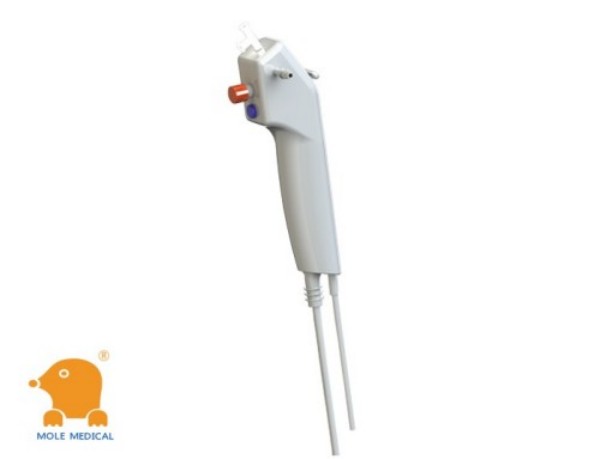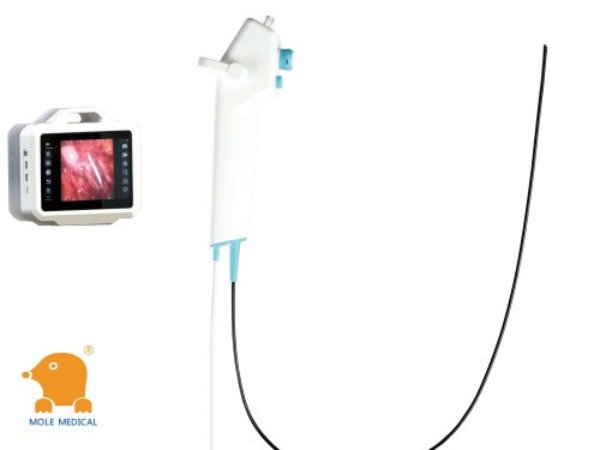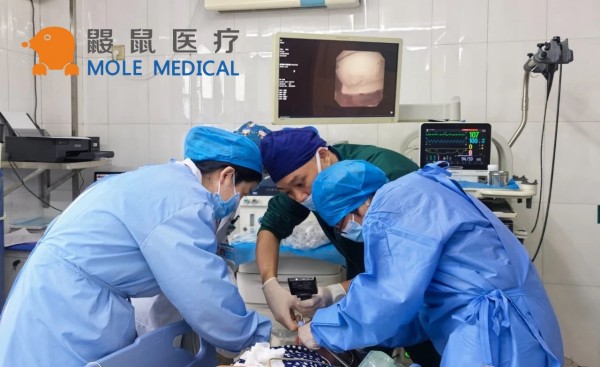Breaking Through the Bottleneck of Decontamination On the Irreplaceability of Disposable Bronchoscopes in Emergency Scenarios
Aug 19, 2025
During the intense emergency rescue, bronchoscopy technology is the core method for handling airway emergencies. However, the traditional reprocessing cycle of reusable bronchoscopes, which lasts for 60-90 minutes (including cleaning, disinfection, drying, and testing), has become a fatal bottleneck restricting the efficiency of rescue. Mole Medical has discovered that with the clinical popularity of disposable electronic bronchoscopes, the emergency department has finally received a disruptive solution.
Disinfection dilemma: The time cost that emergency departments cannot bear
According to a study in the American Journal of Infection Control by Mole Medical, the standardized disinfection process for reusable bronchoscopes requires at least 13 steps. During peak emergency periods, there are threefold pressures:
• Turnaround delay: The average waiting time for patients with acute respiratory failure exceeds 2 hours (Emergency Medicine Journal 2023)
• Infection risk: The FDA report shows that 28% of related infections of reusable bronchoscopes occur in the emergency department
• Equipment wear and tear: Frequent use leads to an increase in the damage rate of the bronchoscope by 37% (AORN data)
Technical Breakthrough: Emergency Applicability of One-Time Bronchoscopy
The new generation of one-time electronic bronchoscopy from Mole Medical achieves a “ready-to-use – used and discarded” closed-loop through integrated design. Its clinical advantages are particularly significant in emergency scenarios:
1. Zero cleaning and immediate response
• From unpacking to operation ≤ 3 minutes, meeting the golden rescue window period
• Case: After application in the emergency department of Mayo Clinic, the response time for airway foreign body removal was shortened to 8.2 minutes (control group 42 minutes)
2. Absolute prevention of cross-infection
• Exclusive use for each patient eliminates the risk of cleaning residue
• Multi-center research confirmed: After using one-time bronchoscopy, the related infection rate in the emergency department dropped to 0.5% (reusable group 2.3%)
3. Flexible handling in mobile scenarios
• Portable host compatible with bedside/ambulance/wild rescue
• The diameter of the bronchoscope body can reach subsegmental bronchi (in line with ATS operation guidelines)
Value Reconstruction: A Technological Revolution Beyond Equipment
In a comparative study conducted at Johns Hopkins Hospital, the disposable bronchoscope demonstrated systematic value:

(Note: Total cost includes cleaning and disinfection labor, equipment depreciation, infection control, etc. Data source: “Chest” 2024)

The core logic of irreplaceability
When dealing with emergencies such as massive hemoptysis and severe pneumonia:
• Irreversibility of time: The brain hypoxia damage caused by waiting for decontamination cannot be reversed
• Uncontrollability of risks: The inactivation rate of mycobacteria by glutaraldehyde disinfection is >10%
• Irrenewability of resources: The decontamination space accounting for 15% of the emergency department area can be transformed into a rescue unit
In the temporal and spatial coordinate system of emergency medicine, the disposable bronchoscope not only resolves the bottleneck problem of disinfection, but also reconfigures the treatment path for airway emergencies. Its value lies not in replacing reusable equipment, but in creating clinical possibilities that traditional techniques cannot achieve – making the response to each breathing crisis shift from waiting to action. Mole Medical believes that with the ACEP (American College of Emergency Physicians) incorporating the disposable bronchoscope into the 2024 edition of the airway management guidelines, this technology is becoming a standard solution for modern emergency departments.

Categories
Latest Articles

Disposable Nephroscopes: Redefining Safety & Efficiency in Urology
Introduction The shift towards minimally invasive urological surgery has found a pivotal ally: the disposable nephroscope. As traditional reusable scopes grapple with persistent biofilm contamination risks and soaring sterilization costs, the global medical community is rapidly adopting single-use solutions. This article analyzes the clinical value, technological evolution, and dynamic innovation landscape driving this transformative shift. ... Read more

Disposable Video Laryngoscope Blades: The Ultimate Solution for Preventing Cross-Contamination
In the operating room, as the cold light of a video laryngoscope illuminates a patient’s airway, an age-old medical challenge is being redefined: How can life-saving instruments avoid becoming vectors of infection? Jiangsu MoleMedical drives an innovative safety revolution—replacing reusable devices with single-use, sterile laryngoscope blades that create a pure barrier for critical airways. Traditional video ... Read more
-2.jpg)
FDA & CE Approved Video Laryngoscope: What Makes It Stand Out?
Introduction In high-pressure emergencies and precision-driven operating rooms, video laryngoscopy is revolutionizing airway management. Mole Medical’s FDA and CE-certified technology replaces tactile-dependent “blind intubation” with real-time visual navigation – enhancing safety, accuracy, and clinical outcomes worldwide. Why Certification Matters Mole Medical’s dual certifications validate its global compliance and performance: FDA Clearance: Rigorous validation of safety/efficacy ... Read more

Mole Medical Showcases Advanced Endoscopy Solutions at CMEF Autumn 2025, Driving Global Partnerships
Guangzhou, China – September 26-29, 2025 – The 92nd China International Medical Equipment Fair (CMEF Autumn) concluded successfully on September 29th at the Canton Fair Complex in Guangzhou. Mole Medical Technology Co., Ltd. (Mole Medical) made a significant impact at the event, drawing global medical professionals and partners to its booth (Hall 2.1, Stand Q24) ... Read more

How to Use Disposable Ureteroscopes Safely and Efficiently
In the field of urology, the application of disposable electronic ureteral-kidney pelvis endoscopy catheters is leading the technological innovation in minimally invasive surgeries. According to the 2024 multi-center research data from China’s urology department, among the over 5,000 surgeries included, the patient group using disposable catheters performed significantly better in key indicators such as operation ... Read more



